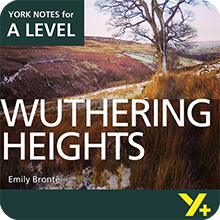Examiner's Notes
You assessed this answer as a Mid.
Hover over the highlighted text to read the examiner’s comments. These are linked to the Assessment Objectives, which are listed in the side panel.
- You must relate your discussion to relevant contextual factors.
When women go in these two texts for social and sexual freedoms it doesn’t work out. Catherine marries Edgar Linton because he has a very big house. Mrs Dalloway marries a politician with lots of money. But neither woman is happy. Clarissa wonders whether she should have married someone else, like Peter Walsh. She also wanted to be a lesbian, as when she kissed Sally Seton. Catherine is happy enough with Edgar until her adopted brother Heathcliff comes back. He has made a fortune, something only men can do at this time. Because she cannot marry him she falls into mental illness, wanting to be a ‘girl again’, running with him on the moor. These two women have not found out who they are. They just want to escape their problems.
Another example of Clarissa’s lack of identity is that she cannot join in her daughter’s modern life-style. After the First World War girls cut their hair short and wore skirts above the knee and were able to move round the city with complete freedom, as Elizabeth does on the ‘omnibus’. The women of ‘Wuthering Heights’ are much less free even than Clarissa. They must wear old-fashioned clothing: robes, petticoats and even ‘white trousers’.
The next big theme is violence. In ‘Mrs Dalloway’ there is not too much violence, though Peter Walsh, who has just come back from Empire, carries a knife which is a symbol of male brutality, and Septimus has died in the War. The women of ‘Wuthering Heights’, however, experience a great deal of assault, as when Heathcliff imprisons Nelly and Cathy and abuses Cathy ‘with a shower of terrific slaps on the side of the head’. Heathcliff gives her ‘a deep cut under one ear’ when she runs away, and tries to kill her dog. Catherine is bitten on the leg by a brutal dog called Skulker. This shows that in these novels women become victims of violence. Their struggle to get identity is very difficult. As Heathcliff says, ‘the more the worms writhe, the more I yearn to crush out their entrails.’
There are many examples of sexism in both novels, making it very difficult for women to struggle for their identity. We can see this because Lockwood patronises Cathy at the beginning of the book in sexist language, calling her a ‘fairy’. Catherine’s ‘wildness’, which is her rebellion against society, is attacked by both Joseph and Nelly. In ‘Mrs Dalloway’ women like Sally and Miss Kilman are not yet able to live as lesbians. Women struggle in the novels to find their identity but ultimately do not do so.
